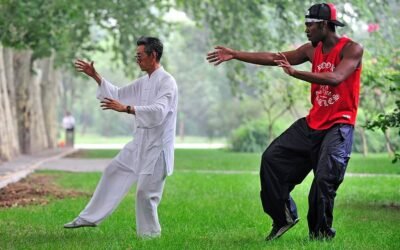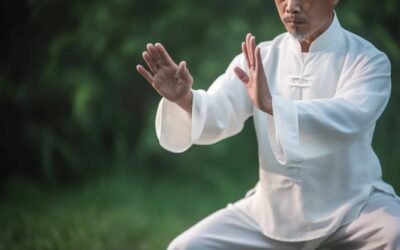Introduction to Kung Fu
Whether it’s traditional Chinese martial arts or unique techniques from other countries, each form has its own charm and cultural background. You will learn about the origins, development, and core techniques of each martial art. Explore martial arts from around the world and embark on a journey of strength and wisdom.
Nunchaku Basics: Training Guidelines and Injury Management
Learning Nunchaku: A Step-by-Step Approach When starting to learn nunchaku, it’s essential to progress gradually and avoid rushing. Each individual move must be practiced thoroughly from all angles. Once a move is mastered, you can combine it with others to create sequences, enhancing fluidity and the aggressive impact of your techniques....
Shaolin Boxing: Illustrated Guide to 36 Practical Combat Techniques
Currently, Shaolin martial arts have spread widely, and it’s no longer uncommon for martial arts students to practice a few sets of Shaolin boxing techniques. However, those who truly understand the principles and applications behind these techniques are few and far between. To highlight Shaolin martial arts’ emphasis on “practical combat,” I...
【Increase Stamina】Ways to last longer in bed without medication
This exercise can be performed while standing, sitting, or lying down. The best time to practice is either early in the morning after waking or at night before bed. Step 1 The purpose of this step is to stimulate sperm production (vitality comes from the transformation of sperm and semen). Rub both palms vigorously together until they become...
Shaolin Ancient Health-Preserving Qigong – Yi Jin Jing
The Origins of Bodhidharma's Yi Jin Jing Source: Bodhidharma, the revered founder of Zen Buddhism at Shaolin Temple, introduced two extraordinary internal practices that have been admired for generations. The first is the "Yi Jin Jing" (Muscle-Tendon Change Classic), and the second is the "Xi Sui Jing" (Marrow Washing Classic). These two methods...
Daoist Breathing Techniques: Activating Deep Life Energy Sources through Abdominal Breathing
Daoist Abdominal Breathing: A Guide to Healthy Breathing Breathing is something we do every moment, yet the fast-paced nature of modern life often leads to quicker, shallower breaths. Fast breathing accelerates the heart rate, speeds up metabolism, and can shorten lifespan. This is why ancient wisdom emphasized the importance of breathing...
Precautions for Practicing Vajra Qigong
The Eight Forms of Vajra Qigong are a distinguished, closely guarded practice within Chinese Taoist culture, known for its profound benefits in health preservation and disease prevention. This system is composed of two parts: Vajra Qigong (the outer eight forms) and Longevity Qigong (the inner eight forms). Passed down orally through generations,...
What Are the Benefits of Tai Chi for Your Body?
Tai Chi, a practice rooted in Chinese martial arts, is known for its slow, controlled movements combined with deep breathing exercises. This gentle form of exercise is highly beneficial for both physical and mental well-being. It can alleviate symptoms of anxiety and depression, improve cognitive function, and even help manage chronic conditions...
How to Choose the Right Nunchaku for Yourself?
Choosing the right nunchaku is a matter of great importance. For every enthusiast, selecting and using the right model can significantly enhance training efficiency and deliver better results. On the other hand, choosing the wrong type can hinder progress and lower the quality of your practice. For beginners, it’s crucial to understand the...
Why is Tai Chi practiced so slowly?
Actually, Tai Chi used to be performed very quickly in the past, and it was originally used for killing. Just think about what makes an effective tool for killing. In real combat, Tai Chi can indeed be fast. The speed shows up in the body movement, footwork, and the yin-yang transitions of the hands. For example, take the 'holding the ball'...
How is the Taoist meditation method practiced?
It’s best to find a quiet room for sitting meditation. If that’s not possible, you can use the bedroom. Keep the windows and doors open for good ventilation, but avoid sitting where there’s a draft. It’s better if the door can be closed to prevent disturbances. When sitting, you can either use a meditation bench or sit on the bed, but a flat...









